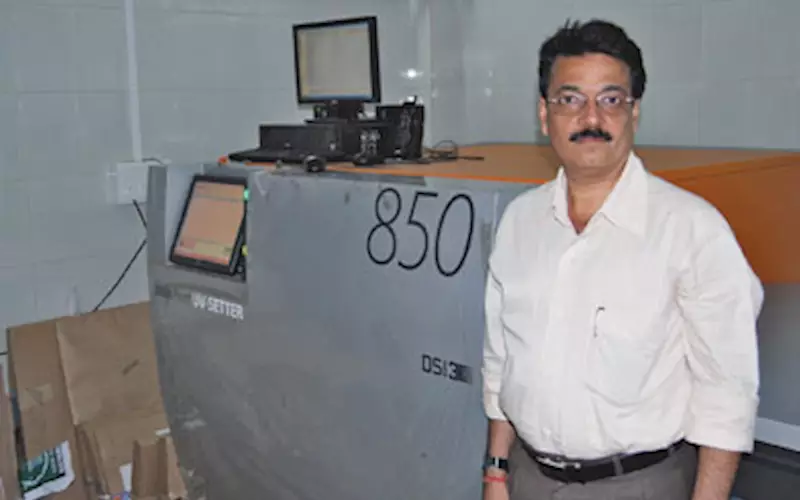Basysprint 850 CtCPs
Deepak Bedi of Mumbai-based Glamour Graphics, says that all three of its Basysprint 850 CtCPs produce crisp dots and offer a cost effective solution.
14 Nov 2011 | By Staff Writer
Describe your company?
Glamour Graphics is a 14-year old pre-press house. In the beginning, the company used drum-scanners and imagesetters for positive film-making. The change in the technology made us to shift from the conventional process to a CTP system and a separate investment in large-format digital printing. Three and half years ago we had invested in our first Basysprint CtCP system. Today we have three such systems.
What does the system do?
The Basysprint 850 CtCP UV setter exposes conventional PS plates. It is a cost-effective solution in the long run. The plates produced by the system is like any other CTP system.
Why did you choose this particular system?
After visiting Hyderabad and watching the live demonstration at five places, we saw that the companies that owned the system were very satisfied. All the five units we saw were operating 24 hours with full capacity. We also took three proofs using violet, thermal and UV technology and according to us there was no difference in the dots.
Did you look at any other similar system?
No. A competitor’s technology was present but there were doubts about their services.
Why did you make the purchase?
After learning about the quality and the cost benefits of the Basysprint CtCP technology, we could not resist, even though it was 40% costlier than thermal CTP. Our goal was to offer quality product at a competitive price.
What features do you particularly like?
Software of the machine is very simple. The machine utilises flat-bed technology and hence the registration on the plate is accurate due to its steady position.
Is there anything you wish it had that it doesn’t?
It has almost everything that a class product should have and I am happy with it.
How fast is it?
It has a speed of 40 plates per hour and depending on the sensitivity of the plate, the speed can be increased. If one more laser-head is added, then the speed can be enhanced to 60 plates per hour.
What’s the quality like?
The quality is at par. As I mentioned, we had taken proofs using three different technology and we found that there was no difference in the quality. Due to the high-powered lasers, the dots produced are crisp and sharp. It is a 1500 dpi resolution machine but the result is like 2400 dpi due to its square pixel technology.
How reliable is it?
It is extremely reliable and a robust work-horse.
How easy is it to use?
It is a user-friendly machine.
How much time or money has it saved?
Being a single-phase machine, the power consumption is 50% less as compared to the competitor technology.
Would you say that it offers value for money?
Yes. Although, the initial investment is high but in the long run it offers cost benefits as well as increased production.
Were there any difficulties experienced during the installation or after?
No. The engineers from Monotech Systems are very skilled and ensured that the machine was properly installed.
What about the pre- and after-sales service?
The service is extremely good.
Who do you think the system is right for?
It is right for pre-press bureaus where the number of plates exposed is high. We expose 20,000 plates per month.
Under what circumstances would you buy another?
The third system was added, recently. We are planning to invest in fourth system within the next six months.
Conclusion
Speed 5/5
Quality 5/5
Reliability 5/5
Value for money 4/5
Supplier’s response
Manish Yagnik, regional manager at Monotech Systems, says: "Glamour Graphics has proved by doing its calculations, Basysprint represents a realistic and cost effective CtCP solution. The semi-automatic version of the 850 CtCP system suited Gamlour’s needs exactly, though manual and fully automated versions of the product are also available. The plates are the key cost element of any CTP installation. And we feel standard UV-sensitive plates offer a significant price advantage."











 See All
See All